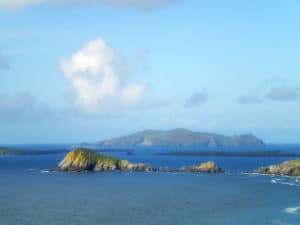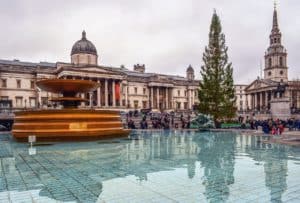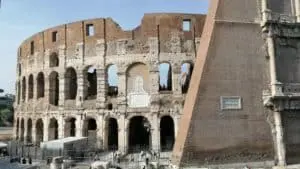Festival of the Dead: A Global Tour from Mexico to Madagascar

Updated On: April 23, 2024 by Noha Basiouny
Across the world, divergent cultures have woven a fascinating tapestry of festivals that honour the deceased. Our article takes you on a global tour from the brightly coloured celebrations in Mexico to the intriguing rituals in Madagascar, showcasing how different societies commemorate their ancestors. In Mexico, the festival known as Día de los Muertos, or Day of the Dead, is an explosion of life-affirming joy amidst the remembrance of past lives. Here, marigold petals lay a path for the spirits, and beautifully adorned altars brim with offerings.
As we move from the familiar Latin festivities, adorned with sugar skulls and fluttering papel picado, our journey takes us to the less-known, yet equally fascinating traditions of Madagascar’s Famadihana, or ‘turning of the bones’. This ceremony fosters family bonds and celebrates ancestral spirits through a reunion that transcends the physical world. These rituals, though separated by oceans and continents, share a profound kinship in their spirit and celebration of life and death.
Table of Contents
The Essence of the Day of the Dead
The Festival of the Dead is deeply entrenched in the human desire to honour the deceased and the cyclical nature of life. It is a time when the veil between the living and the dead is believed to thin, allowing for poignant exchanges across realms. The spiritual significance is palpable as people commemorate loved ones who have passed away, often infused with a blend of cultural and Catholic feasts.
In Mexico, the Día de Muertos (Day of the Dead) is a vibrant expression of this tradition held from October 31st to November 2nd. Families create colourful altars (“ofrendas”) adorned with marigolds, the favourite foods of the departed, candles, and sugar skulls.
- November 1st, or Día de los Inocentes, focuses on children who have died.
- The following day, November 2nd, is reserved for adults.
The culture blends indigenous customs with Catholic practices, marking a time for joyous remembrance rather than sorrow—serving as a reflection on the context and continuity of life.
Rituals vary globally, with communities from Madagascar to Japan observing their unique versions. Yet, what unites these festivals is a reverence for the past, a celebration in the present, and a spiritual bridge that connects us with those who have shaped our cultural heritages.
During the Festival of the Dead, we become part of a timeless tradition, engaging in rites that reach back through history, ensuring that the spirits of the deceased are not forgotten, but rather celebrated with every song, dance, and offering.
Celebrations in Mexico
As we delve into the rich tapestry of the Day of the Dead festivities in Mexico, we’re met with a vibrant fusion of traditional and contemporary practices. In Mexico City, Oaxaca, and Mixquic, the celebrations are a deep expression of art, culture, and ancestral veneration.
Mexico City
In Mexico City, the heart of the nation pulsates with the energy of the festival. The Zócalo, the city’s main square, becomes a focal point teeming with elaborate altars (ofrendas) and a mosaic of marigolds. These offerings are adorned with candles, vibrant papier-mâché skeletons, and photos of the dearly departed. The highlight is the grand parade where locals and visitors alike clad in costumes and skull make-up dance in the streets, transforming the city into a kaleidoscope of living art.
Oaxaca
Oaxaca is renowned for its indigenous traditions and artistic fervour, which reach their zenith during the Day of the Dead. Here, we witness families gathering in cemeteries for overnight vigils, artfully arranging marigold pathways to guide spirits back to the realm of the living. These sacred spaces are richly decorated with offerings of local food, drinks, and personal mementos. The town’s streets and markets overflow with creativity, showcasing local artisans’ handcrafted masks and altars.
Mixquic
The community of Mixquic on the outskirts of Mexico City honours its ancestors with a more intimate and traditional observance. A solemn candlelit procession to the local cemetery marks the culmination of the Day of the Dead here, where the contrast between the flickering candles and the night sky creates a serene yet poignant atmosphere. In Mixquic, the connection between life and death is narrated through the intricate offerings on each tomb, reflecting a singular blend of pre-Hispanic and Spanish influences.
Each location offers a distinct perspective on this profound Mexican celebration, rooted deeply in the belief that death is simply a continuation of life and that, for a moment each year, the lines between the two blur in beautiful remembrance.
Iconic Sights and Activities
In this section, we explore the soul-stirring experiences and visually captivating sights that one can encounter during the Festival of the Dead in various locations. From the vibrant streets of Mexico City to the ancient ruins scattered across the country, these are the iconic activities and locations that you should not miss.
Frida Kahlo Museum
Stepping into the Frida Kahlo Museum is akin to walking through the pages of a vivid diary. The museum, also known as La Casa Azul for its cobalt-blue walls, was the birthplace and residence of the revered Mexican artist Frida Kahlo. Here, visitors can admire personal belongings and artworks that reveal intimate details of her relationship with fellow artist Diego Rivera amidst the couple’s shared history and passions.
Teotihuacan
The ancient Mesoamerican city of Teotihuacan is home to some of the most monumental pyramids in the world, the Pyramid of the Sun and the Pyramid of the Moon. Beyond the awe of their size, the place radiates a sense of mystery and grandeur, making it a must-visit for anyone partaking in the festival’s activities — a fitting homage to the cycles of life and death.
Mitla
Mitla, an archaeological site in Oaxaca, is known for its stunning geometric mosaics and intricate designs that are unmatched in the region. Oaxaca itself is a vibrant source of mezcal, and visitors can enhance their experience by sampling this traditional spirit that’s deeply rooted in local culture. To understand the artistic heritage of Mitla, one must witness its complexity firsthand.
Monte Albán
Monte Albán reigns as a testament to the ingenuity of the pre-Columbian societies, soaring above the Oaxacan Valley. As one of the earliest cities in Mesoamerica, its large plaza, pyramids, and terraces echo the zapotec civilisation’s sophistication and their intimate knowledge of astronomy and architecture. Today, it offers us an extraordinary window into the past.
During your visit, immerse yourself in the bustling atmosphere of Mexico City’s markets. A visit to the Jamaica market reveals a labyrinthine sprawl of vendors selling everything from fresh flowers to mouth-watering street food, encapsulating the essence of Mexico’s rich culinary landscape.
Culinary Experiences
As we journey through the Festival of the Dead celebrations, our senses are tantalised by the diverse culinary experiences on offer. The festivities are not merely a remembrance of the departed but also a celebration of life expressed through local foods that are integral to these occasions.
In Mexico, the Day of the Dead brings forth a feast of flavours. We find families sharing tacos packed with richly seasoned meats and vibrant salsas. The Oaxaca region, known for its culinary diversity, offers a unique food tour that introduces us to the local gastronomy through its street food and handmade crafts. Here, we can’t miss the opportunity to indulge in local mezcal, an agave-based spirit that complements the regional dishes.
| Mexican Delights | Description |
|---|---|
| Tacos | Corn tortillas filled with various fillings |
| Mezcal | Distilled alcoholic beverage from agave |
| Mole | Rich sauce often served with meat |
Meanwhile, in Madagascar, during the Famadihana—often referred to as the ‘turning of the bones’—we encounter a communal feast. The meals are centred around rice and pork or beef dishes, referred to as “varibemenaka”. These gatherings underscore the importance of sharing and togetherness during the festival.
In both countries, the offerings are more than just sustenance; they bridge the gap between the living and the dead, serving as an expression of connection. The vibrant markets brimming with fresh ingredients are evidence of the significance given to each dish as a means to honour those who have passed. It is here, amongst stalls of aromatic spices and colourful produce, that we gain a deeper appreciation for these traditions, enriching our understanding of the local culture.
Preparations for the Visit

As we embark on a cultural voyage that traverses from Mexico’s vibrant Day of the Dead celebrations to the poignant Famadihana of Madagascar, careful preparation is paramount to fully experience these deep-rooted festivals. Our journey requires meticulous planning, from ensuring we meet all entry requirements to devising a well-structured itinerary.
Travel Essentials
Before setting foot on this global tour, we must confirm our travel essentials align with our destinations’ mandates. Initial checks include the validity of our passports and any visa requirements for Mexico and Madagascar; these can vary by nationality, so it’s crucial to verify this Information with the respective embassies. Accommodations should be researched and booked in advance, focusing on locations central to the festivals, thereby immersing ourselves in the cultural heart of our host countries.
Furthermore, it’s essential to pack appropriately for the climate and activities. Our list should include:
- Comfortable footwear for lengthy walks and exploration
- Attire suitable for both celebrations and respectful cemetery visits
- Health and safety items, such as masks and hand sanitizers, if required
Itinerary Planning
Delving into the heart of these cultural phenomena, our itinerary planning must be comprehensive. In Mexico, we’ll schedule our visit to coincide with Día de Muertos on November 1st and 2nd, allowing us to witness the festival’s full splendour. Activities such as nocturnal cemetery vigils and parades require prior arrangements to avoid last-minute disappointments.
For Madagascar’s Famadihana, known as the turning of the bones, we must align our travels with the timing of these unique rituals, often held between July and September. Due to the intimate nature of Famadihana and its occurrence in rural areas, securing local guides in advance is recommended for a genuine and respectful experience.
Our planned itinerary considers key points such as:
- Festival dates and locations
- Transit time between festivities and accommodation
- Local customs and age requirements for participation
- Spiritual and communal events that invite visitor engagement
By attending to these details, we’ll be positioned to not only witness but embrace the profound meanings behind these extraordinary festivals.
Cultural Insight and Local Traditions
In our journeys, we’ve encountered an array of local traditions that stir the soul and ignite the imagination. In Mexico, the Day of the Dead is a time when families and friends gather to create memories of loved ones who have passed. It’s not a period of mourning but a celebration, where lively costumes and the glow of candles create an atmosphere of remembrance and respect. The local guides often share insights into the blend of indigenous and Catholic practices that make this festival unique.
- Mexico: The streets come alive with parades, music, and dance. Candles light up altars (ofrendas) as families decorate them with marigolds and photos to welcome the spirits home.
- Madagascar: The Famadihana, or ‘turning of the bones’, involves locals exhuming the remains of their ancestors, wrapping them in fresh cloth, and dancing with the bundles to live music—a profound expression of love and familial bond.
The traditions observed in these festivals often have deep historical roots, enriched over time by various religious and cultural influences. Our local guides provide cultural insights that enhance our understanding and appreciation for these customs:
| Country | Tradition | Key Elements |
|---|---|---|
| Mexico | Day of the Dead | Altars, Candles, Costumes |
| Madagascar | Famadihana | Ancestral Reburial, Dance, Respect |
These experiences invite us to reflect on the universal ways in which communities venerate their ancestors, each adding a distinct voice to the global chorus on reverence and celebration. Whether through solemn ceremony or exuberant parade, the festivals of the dead reinforce the bonds of community, culture, and heritage. Through these local customs, we witness the timeless desire to honour those who have shaped our past and continue to influence our present.
The Journey Experience
We commence our global tour with a small group, creating an intimate atmosphere that allows for a unique and personal exploration of the world’s most intriguing Festival of the Dead celebrations. Our group trips are designed with comfort in mind, providing private vehicles for transportation and ensuring a smooth journey from one vibrant celebration to the next.
Travelling together, we engage with local communities, shedding light on their memorial customs, and sharing in the profound moments that these festivals offer. A key feature of our trips is the presence of a CEO (Chief Experience Officer), whose role is to deepen our understanding of each locale by connecting us with authentic encounters and traditions.
Here’s a snapshot of our travel itinerary:
- Mexico: Day of the Dead
- Immersive tours in Mexico City
- Authentic celebrations in Oaxaca
- Madagascar: Famadihana
- Participate in the ‘turning of the bones’ ritual
Our CEOs ensure a seamless transition between festivals:
- CEO-assisted transfers
- Pre-arranged accommodations
- Local festival insights
Throughout, we uphold sustainability and respect local customs, fostering profound experiences that resonate long after we return home. Our journey is not just a trip; it’s a passage through the heart of cultural traditions that honour life and the deceased, connecting us as a global community.
Ceremonial Practices and Symbolism

In Mexico, the Day of the Dead invites families to create elaborate altars adorned with candles, photos, and the favourite foods of their departed loved ones. These altars, called ‘ofrendas’, bridge the gap between the living and the dead, acting as a gateway for the souls to visit.
The graveyard becomes a place of celebration during this time. Families spend hours—sometimes even the entire night—beside gravesites. With offerings of marigolds, the vibrancy of their orange petals is believed to guide spirits back home.
Similarly, in Madagascar, the Famadihana ceremony reflects a profound spiritual connection with ancestors. During this ‘turning of the bones’ event, families exhume their ancestors’ wraps with fresh cloth. The energy is high with live music and dancing, reinforcing the cyclic belief of life and death.
| Country | Objects | Description |
|---|---|---|
| Mexico | Papel picado | Symbolises the fragility of life. |
| Madagascar | Fresh cloth | Used to rewrap ancestors, signifying continued care and respect. |
Across these cultures, one can see that remembering the dead can be as much about celebration as it is about mourning. The use of ceremonial objects, the inclusion of specific offerings, and the reverence of spiritual practices encapsulate the diverse ways we honour life after death.
This global tour not only educates us about death traditions but also reinforces our deep-seated need to stay connected with those who have passed, as signified through these shared yet distinct customs.
Festival Decor and Artistry

When exploring the rich tapestry of the Festival of the Dead, we encounter a world where art, altars, costumes, and markets come together to create an ambiance unlike any other. Each element plays a crucial role in the festive decor that transforms these global celebrations into visual spectacles.
In Mexico, during the Day of the Dead, vibrant ofrendas or altars are erected both in homes and cemeteries. They brim with marigolds, the flowers believed to guide the spirits back to the world of the living. Often, these altars showcase photographs, favourite foods, and personal belongings of the departed.
- Altars: Decorated with marigolds, candles, papel picado, and personal mementos.
- Markets: Bustle with the sale of sugar skulls, colourful crafts, and traditional bread pan de muerto.
Costumes are central to the festivities, with people donning elaborate outfits, often including the iconic La Catrina, a skeletal figure donning a wide-brimmed hat. Faces are painted to resemble skulls, celebrating life and death in a truly artistic fashion.
- Costumes: Include skull makeup and elaborate dresses symbolising La Catrina.
We further witness the artistic expression in the markets, pulsating centres of cultural commerce. Here, artisans sell hand-crafted items, each of which holds a piece of the festival’s soul. Artistry is etched into every mask, woven into fabrics, and shaped into clay figures, catering to both the celebratory and remembrance aspects of the holiday.
- Art: Ranges from hand-made masks to intricately painted figurines.
Across the globe in Madagascar, the Famadihana or ‘turning of the bones’ ceremony is marked by the joyful exhumation of ancestral remains, which are wrapped in fresh cloth. Art takes a sombre yet celebratory note as music and dance accompany the rewrapping before the ancestors are returned to their resting places.
We, as chroniclers of global festivals, are privileged to witness and share the rich cultural decor and artistry that define the Festival of the Dead across various cultures.
Connecting with Locals
During the Festival of the Dead, engaging with the local population is an enlightening experience. This festivity offers a unique opportunity to delve into the cultural heart through various interactions. We find that the most significant connections often occur in small towns, where traditions remain unvarnished and the community is more intimate.
- Small Towns: Exploring a small town’s cobblestone paths allows us to witness the preparations and personal touch locals put into this event. We observe altars adorned with photographs and candles, and we’re often invited to listen to stories about loved ones.
- Markets: Local markets are bustling with energy and provide a sensory feast. It’s here that we learn about local foods and crafts integral to the festival. From homemade sugar skulls to vibrant marigolds, the items for sale are as much a part of the celebration as the rituals themselves.
- Local Foods: Sampling pan de muerto and tasting traditional dishes is both a pleasure and a gesture of respect towards local customs.
- Local Guide: Employing a local guide enhances our experiences, offering deeper insights into the ceremonies. They help us understand the significance behind each offering and the rich history of the festival.
| Key Interaction | Benefit |
|---|---|
| Small Towns | Intimate cultural immersion |
| Markets | Sensory and educational experiences |
| Local Foods | Culinary appreciation |
| Local Guide | Enhanced understanding and connection |
By partaking in these activities, we build genuine connections that enrich our journey and deepen our appreciation for the celebration of life and death.
Beyond Mexico: Global Celebrations
As we shift our gaze beyond Mexico, we find that the concept of honouring the dead resonates across the globe. We discover a myriad of festivals that embrace this theme, each imbued with its own unique cultural nuances and traditions.
Haiti hosts the Fet Gede, a vibrant festival showcasing a blend of Vodou rituals and celebrations. Participants often dress in purple and black, and the atmosphere is alive with dance, drumming, and the offering of food to the spirits of ancestors.
Traveling farther afield, Nepal’s Gai Jatra is a festival originating in the Kathmandu Valley, honouring those who have passed away in the previous year. There is a carnival-like procession, featuring cows or children dressed as cows, believed to help guide the deceased in their journey to the afterlife.
In Cambodia, Pchum Ben, also known as Ancestors’ Day, sees families congregate at temples offering food to the monks to generate good karma for their departed loved ones.
Madagascar’s Famadihana, known as the turning of the bones, is an extraordinary ritual where families exhume the remains of their ancestors, rewrap them in fresh cloth, and dance with the wrapped corpses to live music as a means to foster family bonds.
Each of these poignant commemorations encourages us to reflect on our mortality and appreciate the vibrancy of life. They’re an integral part of travel experiences that allow us to connect deeply with cultures different from our own, offering us a new perspective on the universal phenomenon of death and remembrance.
Frequently Asked Questions
We’ve gathered some common queries to help you understand the multifaceted nature of Festival of the Dead traditions around the globe.
What are the origins and significance of the Festival of the Dead in different cultures?
The Festival of the Dead has roots that often trace back to indigenous beliefs intertwining with Catholic traditions, such as in Mexico’s Día de los Muertos. In other cultures, such as Madagascar, the festival connects to ancestral worship and community remembrance.
How do the celebrations for the Festival of the Dead vary across the world?
Celebrations vary greatly by region, with Mexico’s Día de Muertos featuring lively parades and altars called ofrendas, while in Japan, Obon is marked by the lighting of bonfires and lanterns. Each country showcases its unique customs, elaborating cultural significance.
What traditional activities and ceremonies are associated with the Festival of the Dead?
Activities vary from the creation of altars to honour the deceased, as seen in Mexico, to more solemn family gatherings and graveside visits. In certain cultures, dance and music play a central role in the ceremonial aspects of the festival.
Which foods and beverages are typically consumed during Festival of the Dead celebrations?
In Mexico, traditional foods include pan de muerto and sugar skulls, alongside regional dishes served as offerings. Many cultures involve special recipes that are believed to be favoured by the departed.
How do people prepare for the Festival of the Dead in terms of decorations and costumes?
Preparation involves elaborate decorations such as marigolds in Mexico, or grave decorations in Madagascar. Costumes can be an essential aspect, often reflecting historical or symbolic figures related to death.
Are there any contemporary issues or controversies surrounding the global observance of the Festival of the Dead?
The commercialisation and cultural appropriation of such festivals have raised concerns, with efforts being made to preserve the authenticity and respect the origins of these deeply significant cultural practices.






